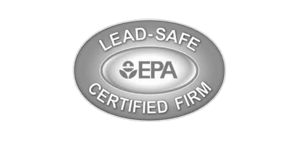Mold toxicity is a big problem worldwide, affecting millions. It causes many health issues that are hard to spot. When people breathe in, eat, or touch mold, they can get sick, especially if it’s in their homes.
People might feel tired all the time, have breathing problems, or get headaches. They might also have skin issues, feel foggy in the brain, or have stomach problems. Mood swings, muscle pain, and allergies are common too. These symptoms can really mess up your life.
Key Takeaways
- Mold toxicity occurs when mycotoxins are inhaled, ingested, or come into contact with the skin.
- Common symptoms include chronic fatigue, respiratory issues, and skin reactions.
- Mold toxicity can significantly impact daily life and overall well-being.
- Understanding the warning signs is key for early detection and treatment.
- Mold toxicity can be treated with proper medical care and environmental changes.
Understanding Mold Toxicity and Its Impact on Health
Mold toxicity is a big worry for many, mainly those in damp places. Mold is a fungus that grows in wet, humid spots. It releases tiny spores into the air.
Indoor mold can cause health problems, thanks to toxic substances called mycotoxins. These can be breathed in, leading to various health issues.
Types of Mold and Their Health Implications
Many types of mold can grow indoors, each with its own health risks. Some common ones include:
- Aspergillus: This mold can trigger allergies, breathing problems, and even aspergillosis, a serious condition.
- Stachybotrys chartarum: Known as black mold, it releases mycotoxins. These can cause serious health issues, like breathing problems and brain damage.
- Penicillium: This mold can lead to allergies and breathing issues. It can also produce mycotoxins, causing more severe health problems.
Mold exposure symptoms vary by person and mold type. Common signs include breathing problems and allergic reactions like skin irritation and itchy eyes.
Knowing about mold toxicity is key to a healthy home. Recognizing mold symptoms helps prevent illnesses caused by mold.
What Are the 10 Warning Signs of Mold Toxicity?
It’s important to know the signs of mold toxicity early. This condition can cause a range of health problems, from mild to severe.
Respiratory Issues and Sinus Problems
Respiratory and sinus issues are common signs of mold toxicity. Being around mold can make asthma worse. This can lead to coughing, wheezing, and feeling short of breath.
- Coughing and wheezing
- Shortness of breath
- Nasal congestion
- Sinusitis
Other signs of mold toxicity include:
- Chronic fatigue
- Headaches and migraines
- Skin reactions and rashes
- Brain fog and cognitive difficulties
- Gastrointestinal issues
- Mood swings and depression
- Muscle and joint pain
- Allergic reactions
These symptoms can really affect your daily life. It’s key to find and fix mold problems quickly to avoid health issues.
Knowing the signs of mold toxicity, like toxic mold symptoms and mold poisoning symptoms, helps. It’s important for getting the right medical care and removing mold from your space.
Conclusion: Addressing Mold Toxicity and Seeking Help
It’s important to know the 10 warning signs of mold toxicity to act fast. Mold toxicity symptoms can really hurt your health in many ways.
To fight mold toxicity, you need to get rid of mold and help your body detox. This means removing mold from your home or work, using supplements like glutathione, and managing symptoms with antihistamines and food changes.
Getting professional help is key if you think you have mold toxicity. Doctors can help with testing, treatment, and ways to prevent health problems later on.
By knowing the warning signs of mold toxicity and taking action, you can lower your risk of health problems. This helps improve your overall health and well-being.
Reclaim Your Virginia Home with Ram Restoration
Storm, fire, or water damage? Ram Restoration provides fast, dependable emergency response and expert cleanup for all your restoration needs. Available 24/7—contact us now and start rebuilding today!







